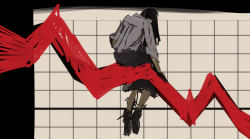I can still recall my confusion as I walked into the dingy Social Sciences building at the University of Buenos Aires one day last fall. Among the posters of Che Guevara and Karl Marx, the cigarette butts, and the multitude of students dressed in dark colors sprawled on the floor, a massive sign hung boldly at the entrance reading “tomada.”
The university was “tomada,” or “taken,” by the students, who were protesting for better facilities and a new building and against what they perceived as a growing movement in Argentina toward the privatization of education. As a result, the school was shut down for 45 days.
While most Argentines regarded this routine striking as a nuisance that they had to deal with on at least an annual basis, I was fascinated by the activism I witnessed. The passion and awareness that the students displayed taking to the streets in the cold Buenos Aires winter to shout, scream, and dance, and the sheer dedication that they showed towards the future of their education were frankly inspiring.
When Argentines asked me if strikes like that happen at my university in the U.S., my answer was always a resounding “nunca!”—never. I usually followed that with a disparaging rant about the deficit of student activism in the U.S.
Much of the American populace seems dormant in the face of two wars and the growing contingent of radical, anti-progressive right-wing politicians in Congress known as the Tea Party. I have no problem with the actual existence of the Tea Party—they have every right to organize themselves and implement policies—but where was the opposition? Sitting quietly on the sidelines, hoping for “change we can believe in” from Obama?
Now, though, the Occupy Wall Street movement has taken politics by storm, and I am happy about it. In a healthy democracy, there should be free public debate with a robust force of critics. There is clearly ample demand for this in the U.S. public. The Occupy movement has spread like wildfire, and according to Occupytogether.org, meetups for the movement are occuring in 1,418 cities.
This movement, like the strikes that occurred in Buenos Aires, involves a huge number of young people and a laundry list of demands. The protests have been dismissed by many commentators as nothing more than the product of bored and disaffected youth complaining about things they have no control over. It has also been labeled as the left wing’s version of the Tea Party. And it has provoked a hilarious response from some politicians, with Herman Cain and Newt Gingrich classifying the movement as “class warfare.”
I feel the same way about the Occupy movement as I did about the strikes I witnessed in Buenos Aires. That is, that the activism and reclaiming of the public sphere—in the sense that young people are making an effort to “occupy” social spaces in a productive way—is inspiring. Whatever one thinks of the protesters and their goals, their movement is based on activism rather than apathy.
If the end result of the Occupy movement is that discussions that were previously confined to exclusive intelligentsia dinner parties and college debate societies now take place in public, then it was worth it. The sheer magnitude of the movement demonstrates that it should be taken seriously, and that the multitudes of protesters who feel angry and powerless are ready to take action.
House Majority Leader Eric Cantor’s statement that the movement represents “growing mobs” that are concerned with “the pitting of Americans against Americans” is, quite frankly, ridiculous. We should not conceptualize protests as divisive acts.
Protests can be community-building, and can forge social ties and foster greater political inclusion. The Occupy movement should be allowed to question, criticize, and shout as much as it likes as long as it has as its mission the betterment of the lives of average Americans.





Hi,
I’m writing my MA thesis at the moment on the piquetero movement of the late 1990s early 200s in Argentina while at the same time attending Occupy protests in my hometown of Toronto, Canada. I just came across this article and I really appreciate the comparison. Today at the occupation of St. James Park I saw many of these parallels that you describe between the protesters in Buenos Aires and those in the downtown Toronto park. The heterogeneity of their demands is a definite commonality. Like you, I believe that this is not necessarily a bad thing. What came out of the fragmented nature of the protests in Argentina were people who were forever changed by their participation, who continue to be politically involved within the same networks they first formed during the piquetero movement. There are gender groups that have formed to look specifically at women’s issues and these persist. When there are many struggles united within a movement, there does not have to be a single marker of success or a single ‘end’ nor should diverse groups/causes work in isolation. They can cross-pollinate one another with resources, ideas, motivation, etc. This cross-over is extremely valuable as relationships form and learning occurs that will last long after the occupation is over.